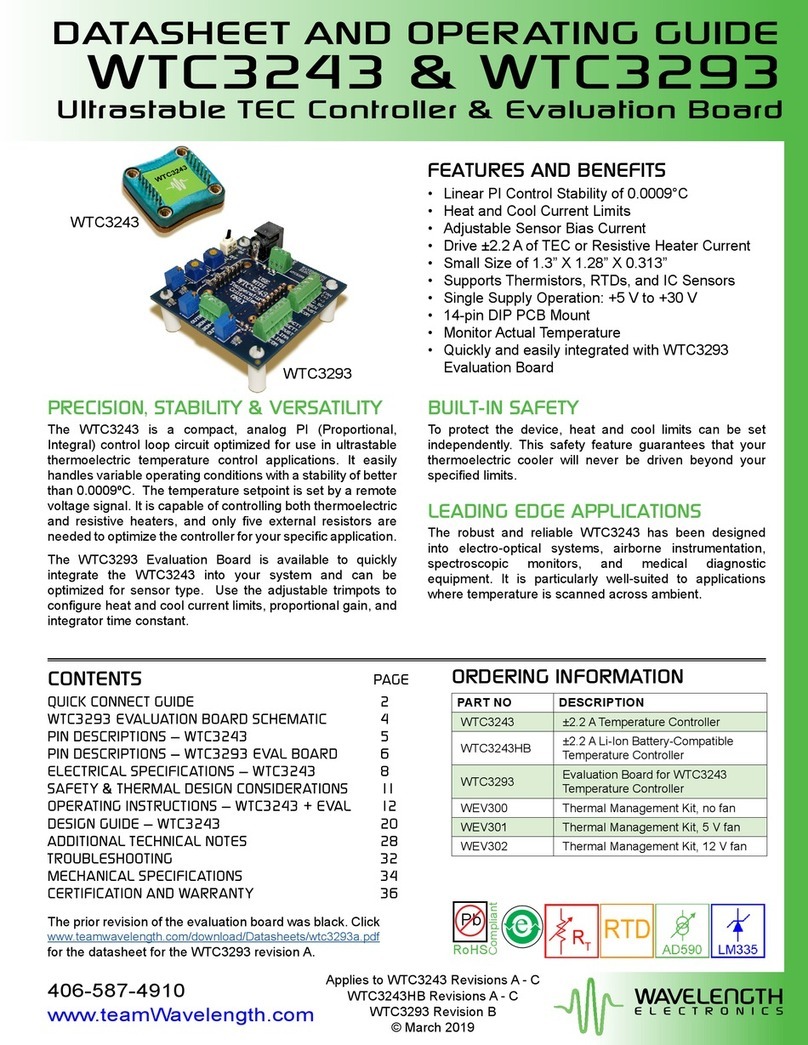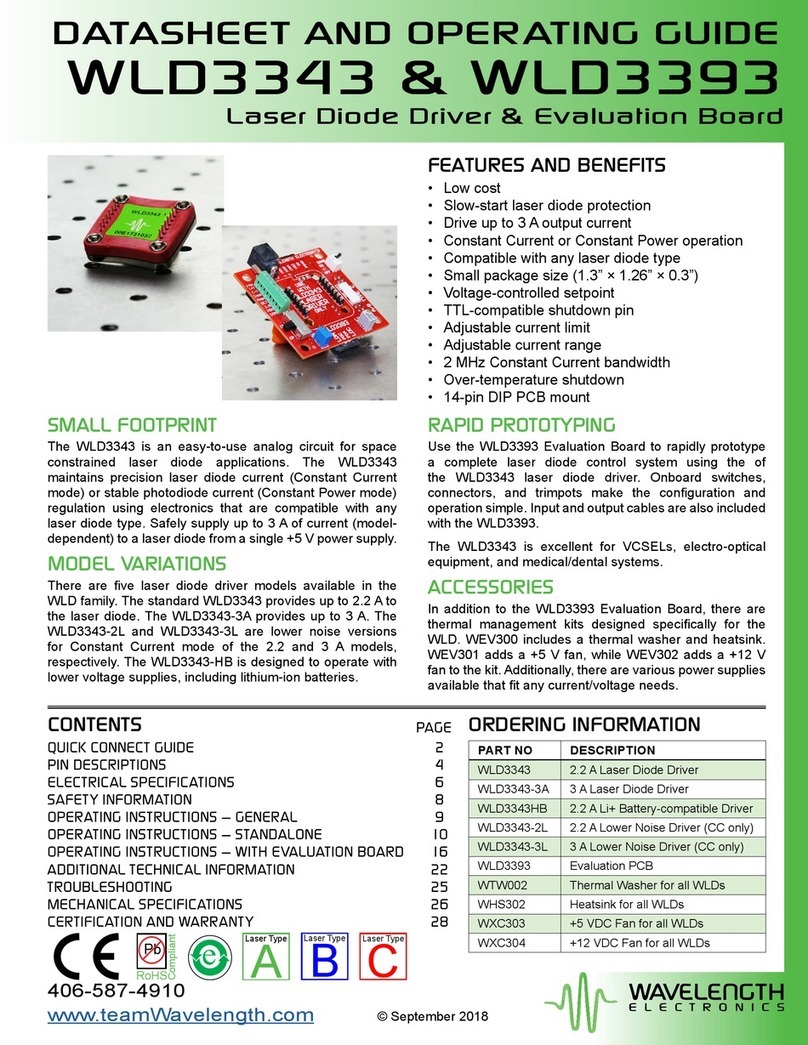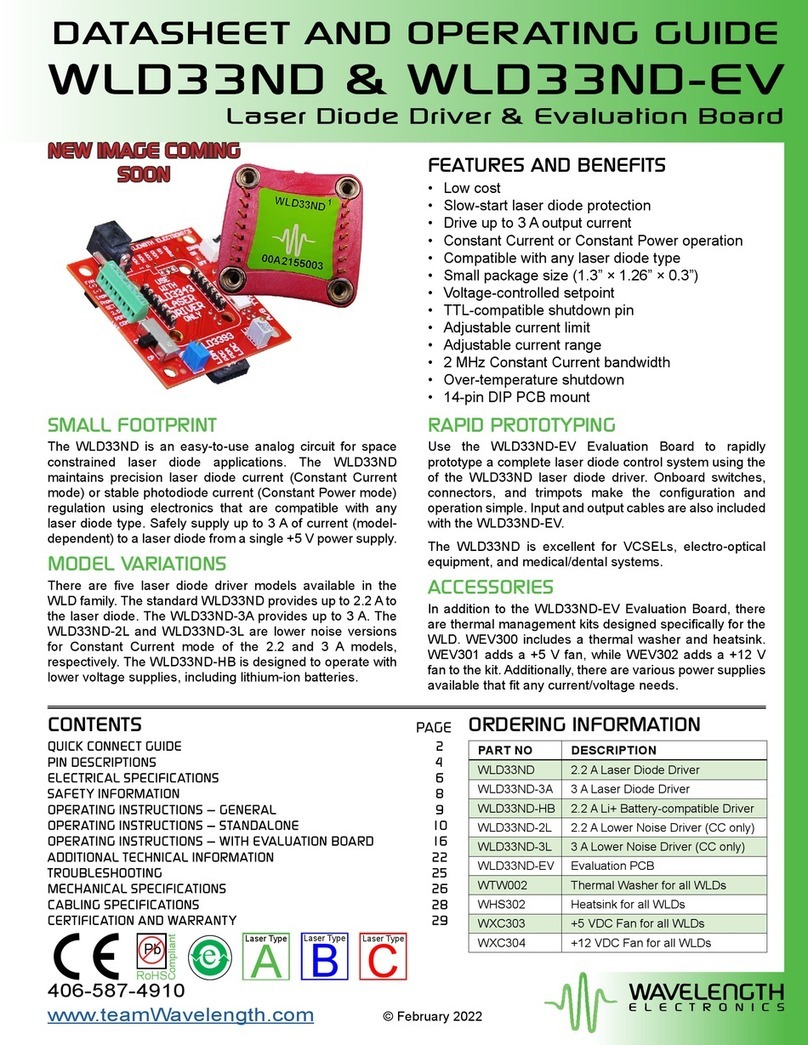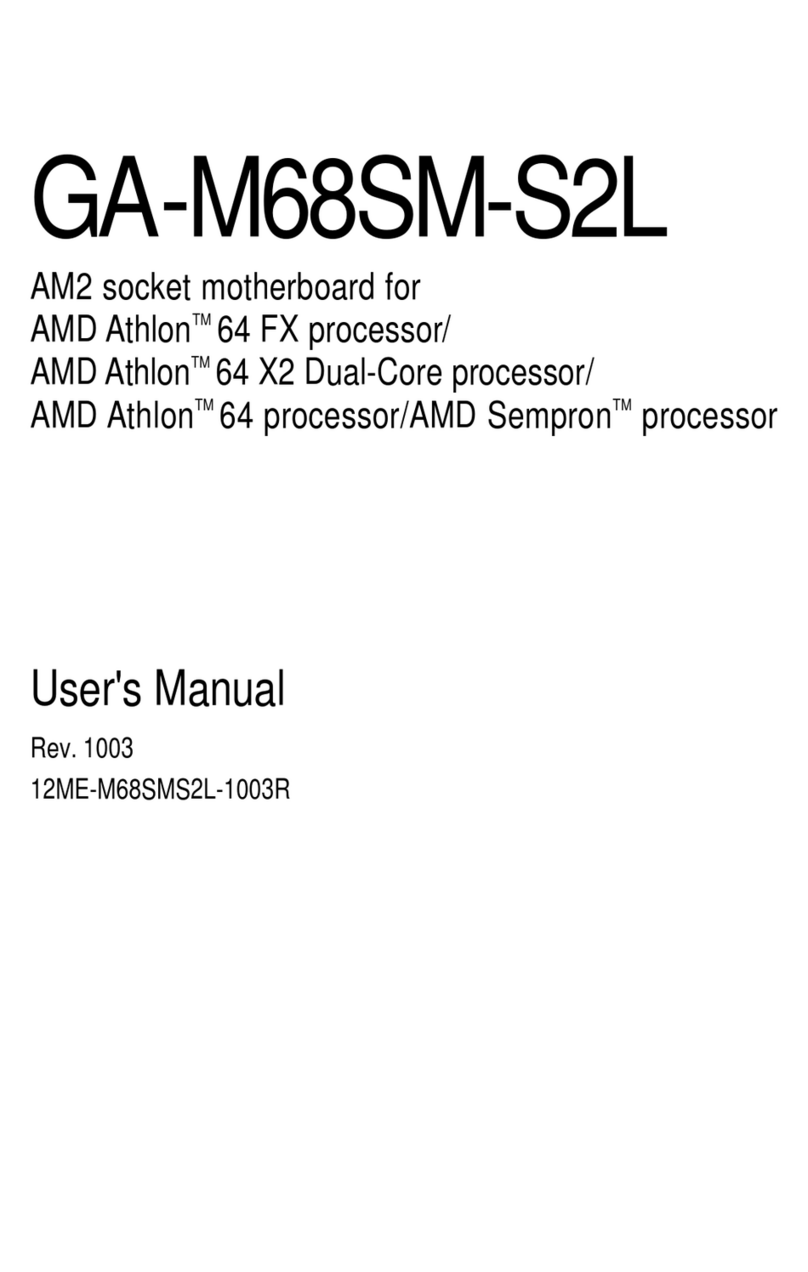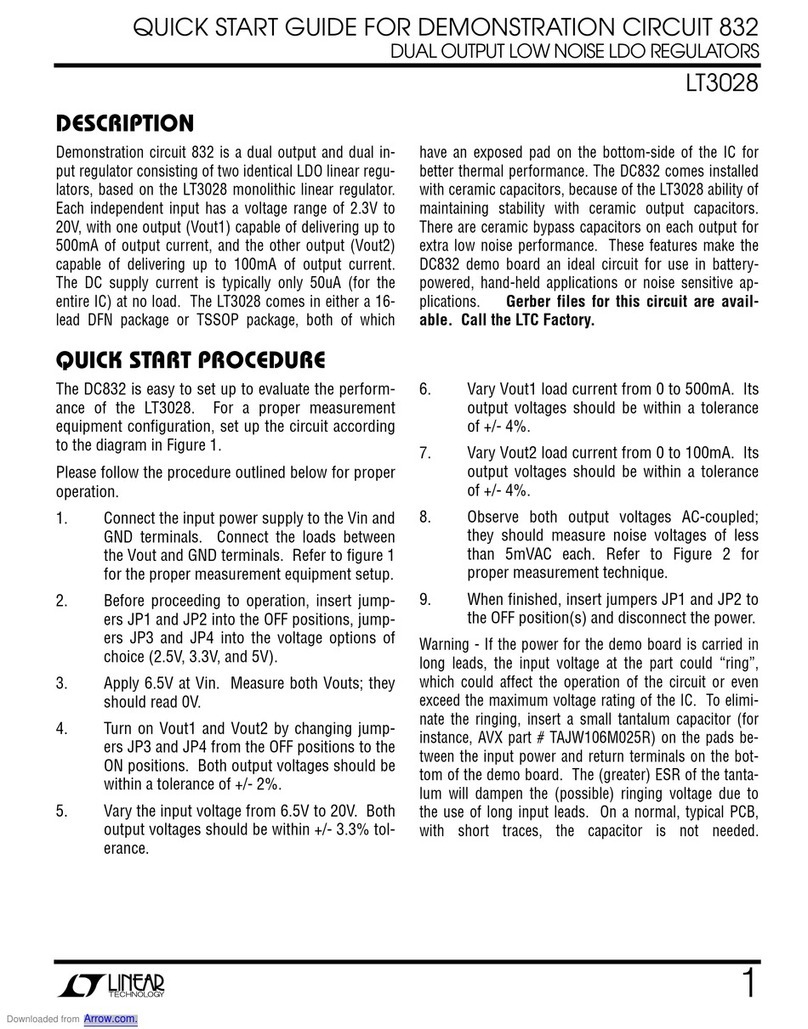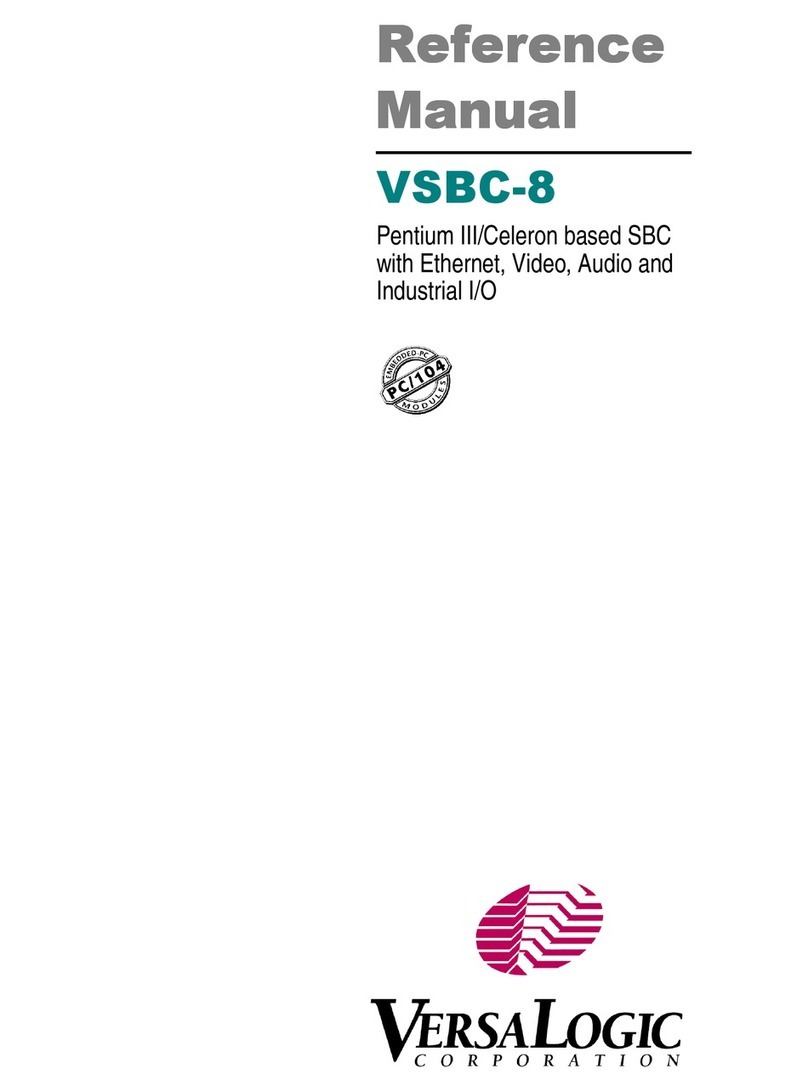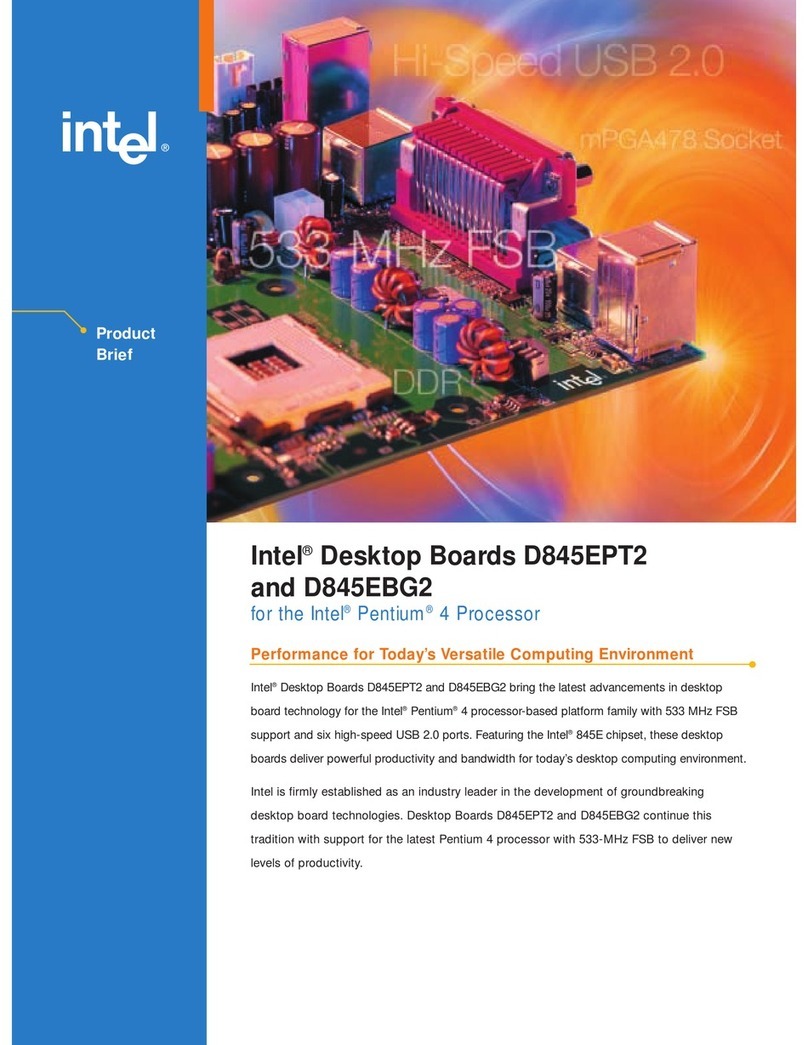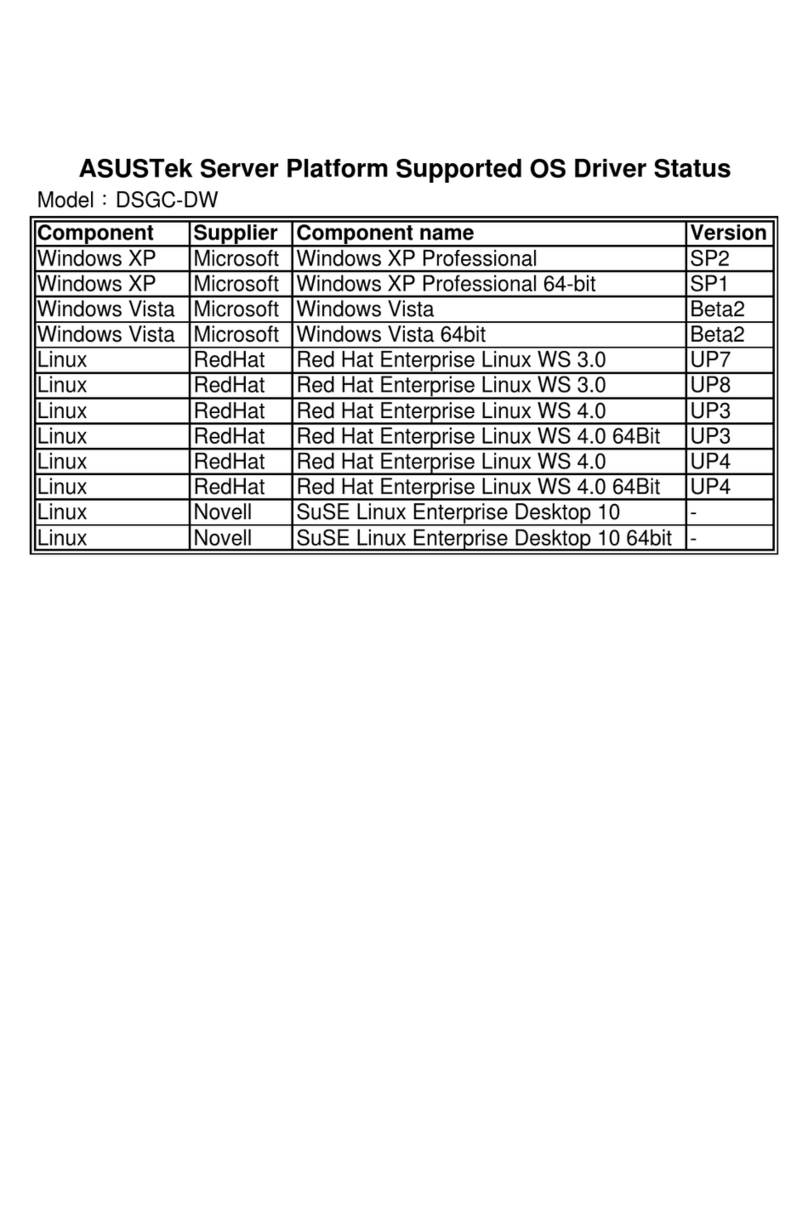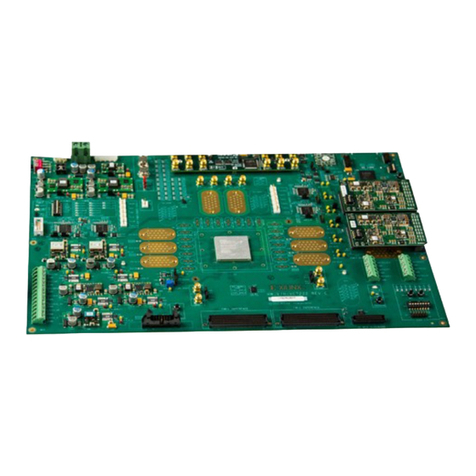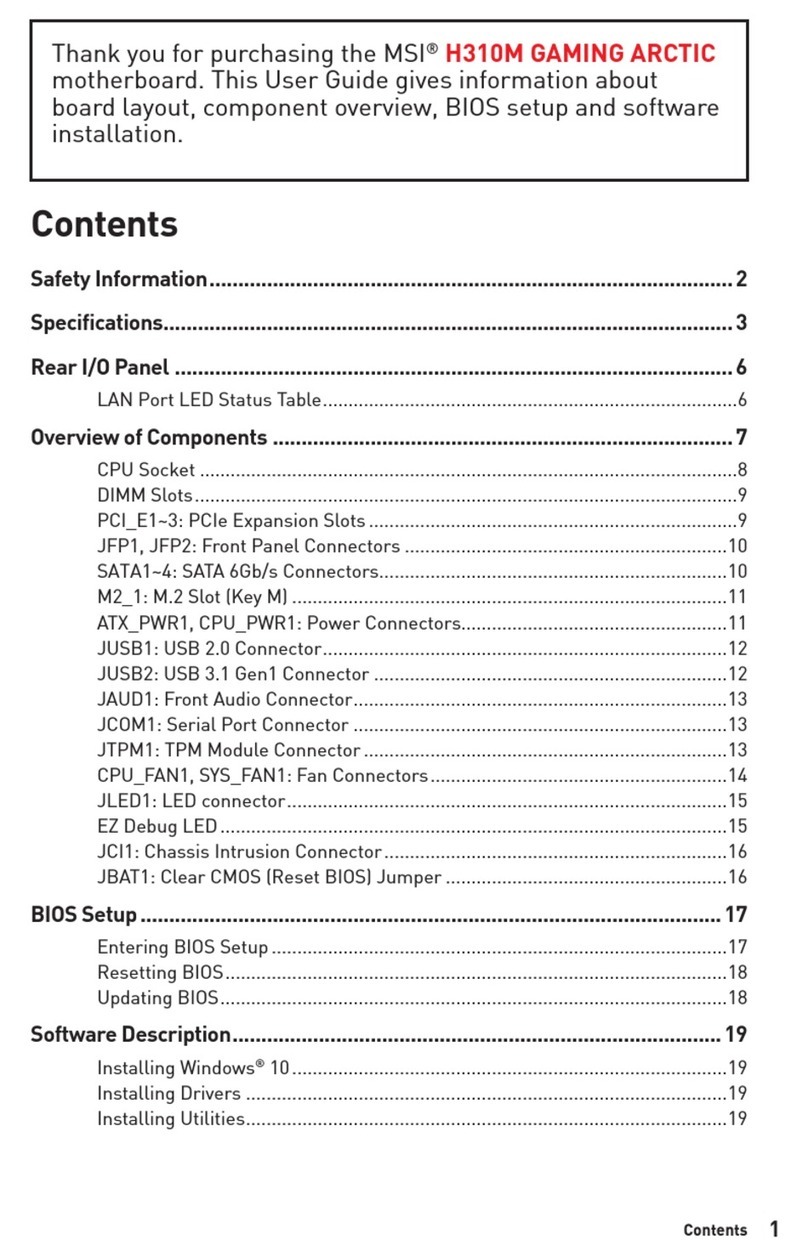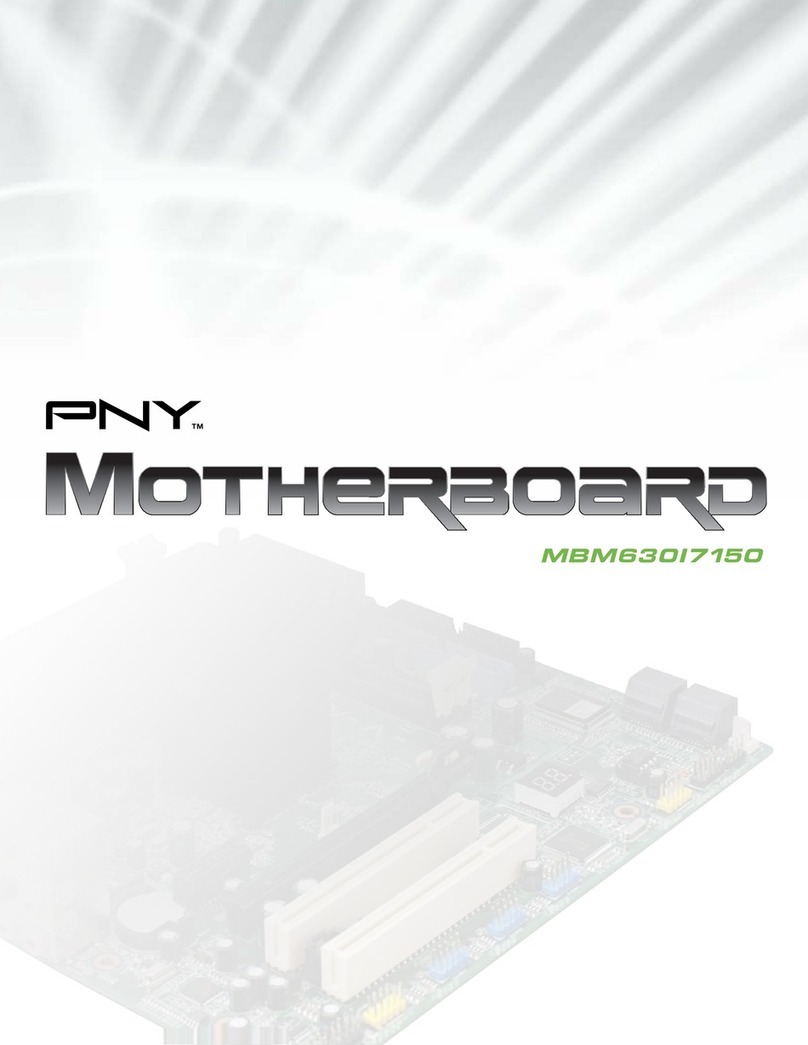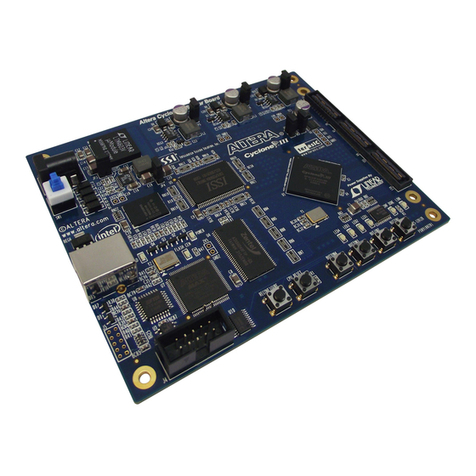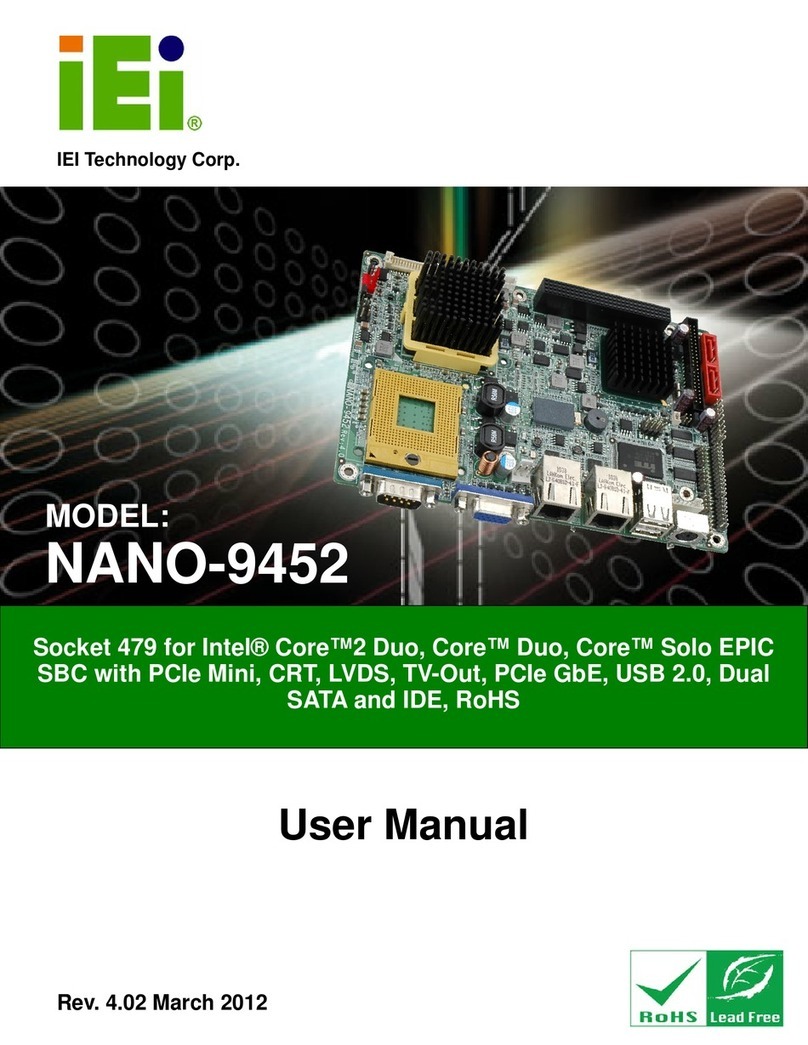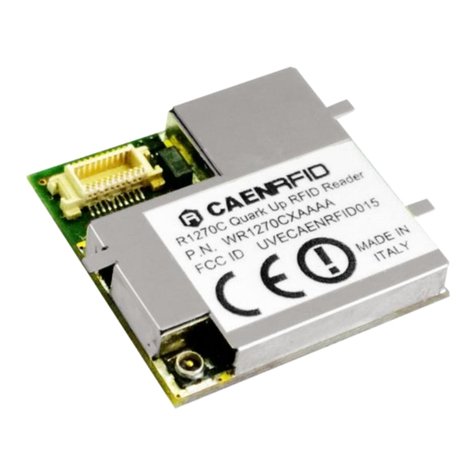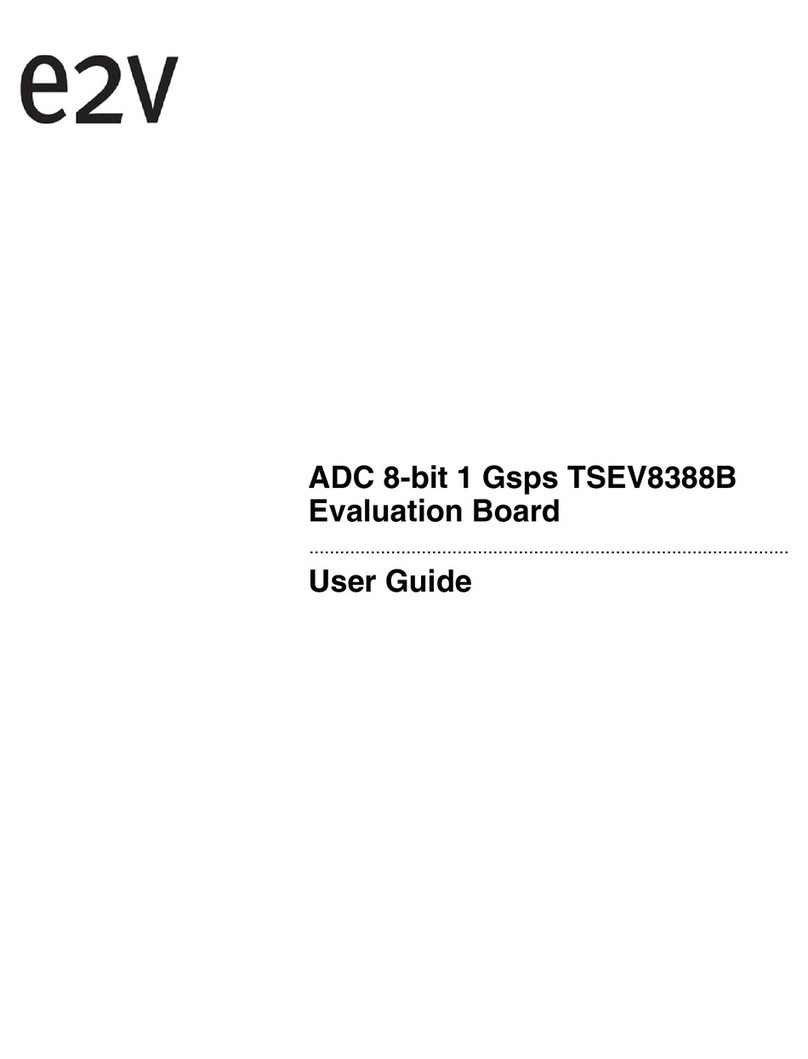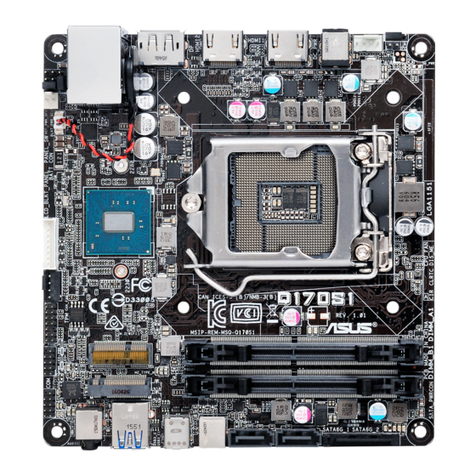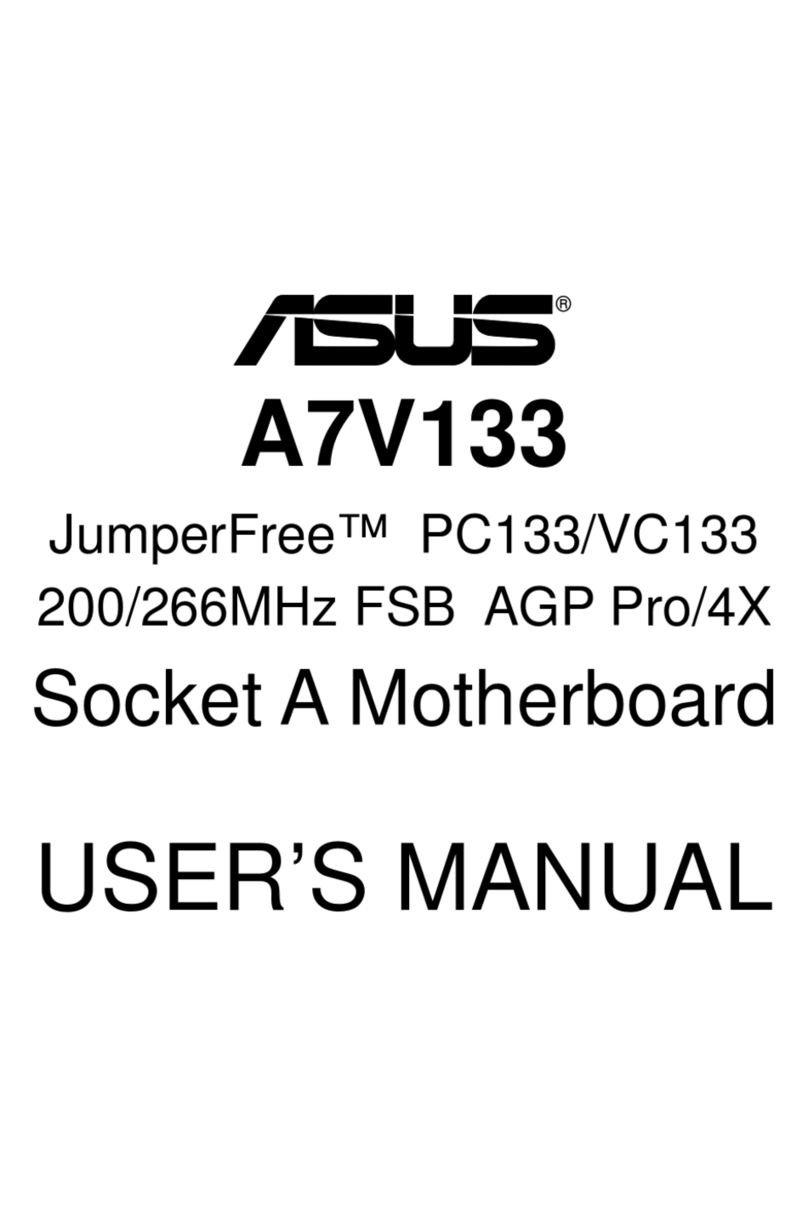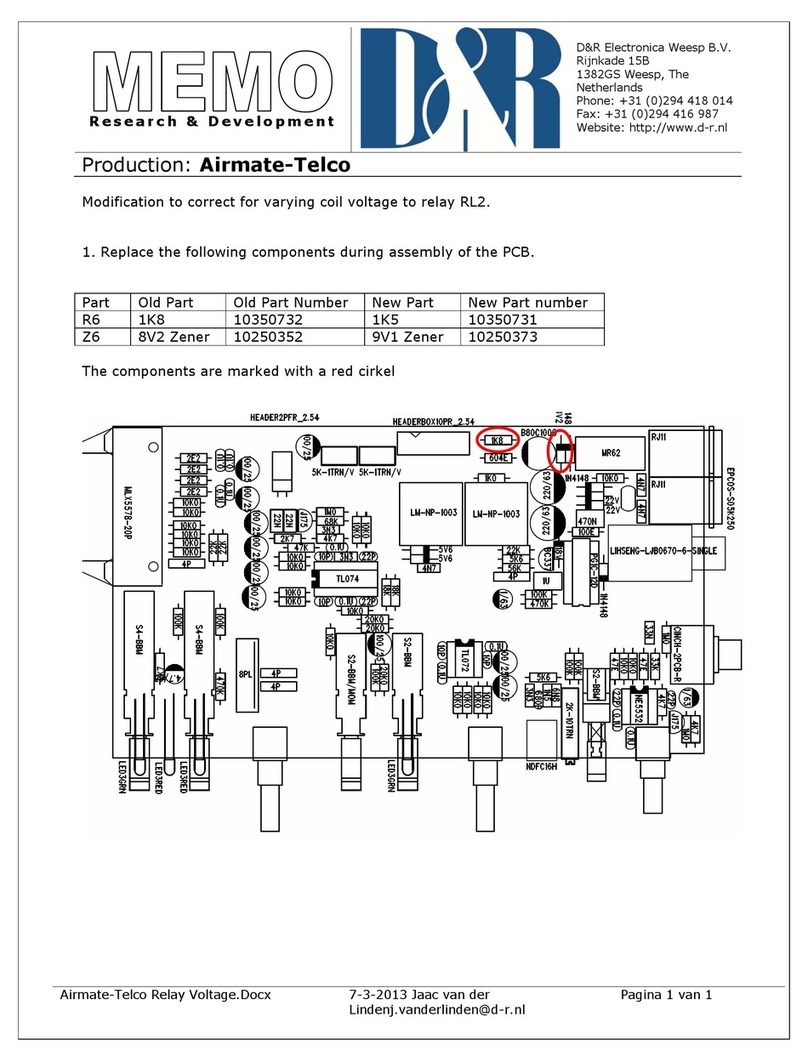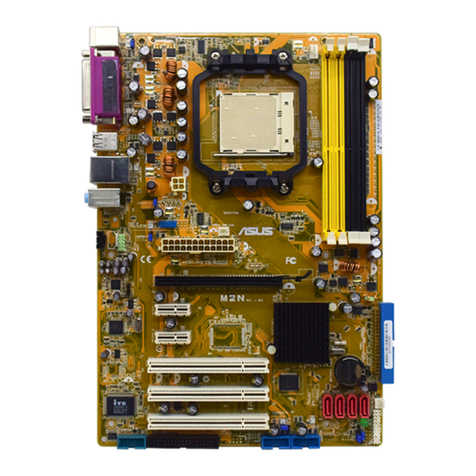
© 2022 www.teamWavelength.com 11
WTC3243 TEMPERATURE CONTROLLER
SAFETY INFORMATION
& THERMAL DESIGN
CONSIDERATIONS
SAFE OPERATING AREA — DO NOT EXCEED
INTERNAL POWER DISSIPATION LIMITS
!
(SOA).
Visit the Wavelength Electronics website for the most
accurate, up-to-date, and easy to use SOA calculator:
www.teamwavelength.com/support/design-tools/soa-tc-calculator/
For more information on Safe Operating Area, see our
Application Note AN-LDTC01: The Principle of the Safe
Operating Area.
PREVENT DAMAGE FROM ELECTROSTATIC
DISCHARGE
Before proceeding, it is critical that you take precautions to
prevent electrostatic discharge (ESD) damage to the driver
and your laser. ESD damage can result from improper
handling of sensitive electronics, and is easily preventable
with simple precautions.
Enter the search phrase “ESD Precautions for Handling
on ESD-safe handling practices.
We recommend that you always observe ESD precautions
when handing the WTC controller.
THEORY OF OPERATION
The WTC3243 is a linear temperature controller that delivers
(TEC), or unidirectional current to resistive heaters.
The fundamental operating principle is that the controller
adjusts the TEC drive current in order to change the
temperature of the sensor that is connected to the thermal
load. The goal is to make the voltage across the sensor match
the setpoint voltage, and then keep them equal in spite of
changes to ambient conditions and variations in thermal load.
The controller measures the load temperature by driving a
current through the temperature sensor and measuring the
voltage drop across it. It may be useful to remember that you
do not directly adjust the setpoint temperature. Rather, you
adjust a voltage signal that represents the sensor voltage at
the desired temperature setpoint.
While the output is enabled the controller continuously
compares the setpoint voltage and the actual sensor voltage.
adjusts the output current—thereby driving the TEC or heater
Once the actual sensor voltage equals the setpoint voltage,
the controller makes minor adjustments to the output
the drive current accordingly.
The controller includes features that help protect the load
from damage, and also make it more versatile in a wide array
Operating Instructions — WTC3243 + EVAL BOARD on
page 12.
• Current limit: Independent heating and cooling current
limits avoid over-driving and damaging the TEC or heater.
• for
prototyping and benchtop applications the temperature
setpoint can be adjusted with the onboard trimpot on the
evaluation board. When the controller is integrated into an
automated control system, the temperature setpoint can
• Local Enable on WTC3293 Evaluation Board: the
on whenever power is applied to the unit.
• Control loop: the controller employs a smart Proportional-
Integrating control loop to adjust the drive current. The
proportional term is user-adjustable, and when properly
minimal overshoot and ringing.




















